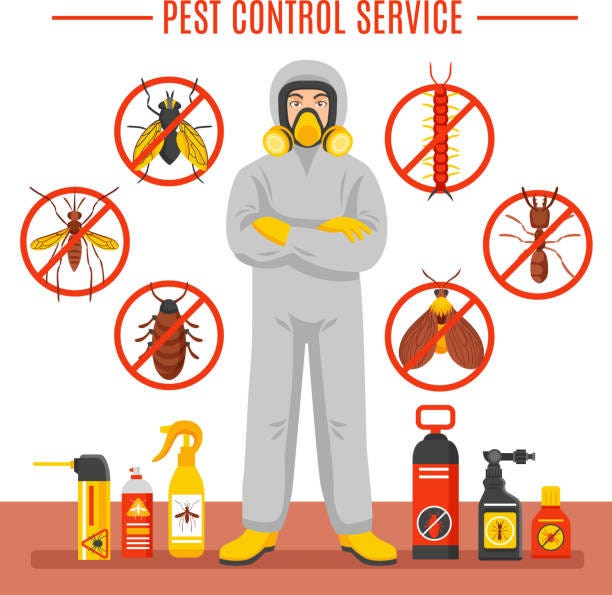Trusted A1 Exterminator Charlotte NC - Comprehensive Pest Solutions
Bed Pest Treatment Malfunction: Comparing Chemical Vs. Non-Chemical Solutions
In the world of pest control, especially when dealing with the persistent concern of bed bugs, the option in between chemical and non-chemical treatment solutions can be an essential one. Both approaches provide unique benefits and disadvantages, affecting factors such as effectiveness, safety and security factors to consider, and total cost. By checking out the nuanced details of each method, a more clear understanding of which course to seek in addressing a bed pest infestation can be obtained.
Performance of Chemical Therapies
Chemical treatments for bed insect invasions have been widely recognized for their rapid and powerful efficacy in getting rid of these pests. When thinking about the efficiency of chemical therapies, it is crucial to understand that they can supply a fast and thorough service to a bed insect trouble. Specialist pest control operators frequently count on insecticides to target bed insects at different stages of their life process, consisting of eggs, adults, and nymphs. These chemicals typically function by interfering with the bed insects' anxious system, causing paralysis and eventual death.
Moreover, chemical therapies have the advantage of supplying residual impacts, indicating that they can remain to remove bed bugs also after the initial application. This recurring action is specifically valuable in combating any kind of possible re-infestations. Additionally, the quick action of chemical treatments can bring relief to individuals dealing with extreme bed bug infestations, permitting them to restore control of their living rooms rapidly.
Safety And Security Interest In Chemical Solutions
One vital element that calls for careful consideration when utilizing chemical remedies for bed insect therapy is ensuring the security of occupants and the atmosphere. Exposure to specific chemicals used in bed bug therapies can lead to breathing issues, skin irritability, or various other damaging reactions, specifically in individuals with pre-existing problems or level of sensitivities.
Furthermore, the ecological impact of chemical remedies is one more significant consideration. Some chemicals used in bed pest treatments may be harmful to helpful pests, wild animals, and ecosystems if they leach right into the dirt or water supply. It is important to utilize chemical therapies judiciously, adhering to safety and security standards, and taking into consideration less poisonous options to minimize these risks and make sure the reliable and safe administration of bed bug problems.
Benefits of Non-Chemical Techniques
Thinking about the prospective safety concerns and ecological influence connected with chemical options for bed insect treatment, discovering non-chemical techniques provides a promising alternative with numerous distinct benefits. Non-chemical treatments are ecologically pleasant, as they do not add to air or water pollution, making them a lasting selection for insect control.
Furthermore, non-chemical remedies can be effective in targeting bed pests, including hard-to-reach locations where chemical therapies might not pass through. Techniques such as warm therapy, vacuuming, heavy steam cleaning, and mattress encasements provide detailed eradication without the usage of damaging chemicals. Moreover, non-chemical techniques can be less turbulent, requiring marginal prep work and enabling quicker reentry right into treated locations. Overall, choosing non-chemical bed pest treatment approaches not only focuses on safety and environmental management however also makes certain efficient and thorough insect control.
Limitations of Non-Chemical Treatments

In addition, non-chemical therapies frequently need numerous applications to achieve effective elimination. This can be taxing and may not always ensure full elimination of all bed pests and their eggs, particularly in surprise top article or hard-to-reach locations.
Additionally, the success of non-chemical treatments heavily depends on appropriate application and thoroughness, which can be challenging for individuals without expert know-how. Inadequate application of non-chemical approaches might result in incomplete removal, leading to persistent invasions and the requirement for extra therapies.
Therefore, while non-chemical therapies have their benefits, it is necessary to acknowledge these restrictions and consider them when determining the most effective method for handling bed pest problems.
Cost Contrast: Chemical Vs. Non-Chemical Options
Given the restrictions associated with non-chemical therapies, a vital facet to evaluate in the context of bed bug monitoring is the cost contrast between chemical and non-chemical options. In comparison, non-chemical therapies like heat treatment or vapor can be much more pricey, with costs varying from $1,000 to $6,000 for an entire home. While the preliminary cost of chemical treatments may appear lower, several therapies may be needed to completely eliminate the problem, potentially enhancing the total expense.
Final Thought

Considering the prospective safety worries and ecological impact connected with chemical remedies for bed insect treatment, discovering non-chemical approaches presents an encouraging choice with a number of distinct benefits.Provided the constraints linked with non-chemical treatments, an essential facet to evaluate in the context of bed bug administration is the cost contrast in between chemical and non-chemical choices. In comparison, non-chemical therapies like warmth treatment or vapor can be much more costly, with expenses varying from $1,000 to $6,000 for a whole home. While the preliminary expense of chemical therapies might appear reduced, several therapies may be needed to totally eradicate the infestation, possibly household pest control raising the overall cost.In conclusion, when comparing chemical and non-chemical bed bug therapy options, it is necessary to take into consideration performance, safety and security, benefits, limitations, and expense.